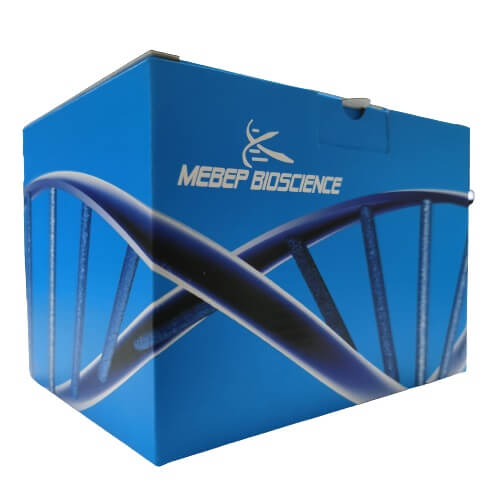
Borrelia burgdorferi (BB) Nucleic Acid Detection Kit (Fluorescent PCR Method)
2025-03-10
Vibrio vulnificus Nucleic Acid Detection Kit (Fluorescent PCR Method)
2025-03-10Eight Types of Viral Diarrhea Pathogens Nucleic Acid Detection Kit (Fluorescent PCR Method)
Mail to us
Product Number: DTK543
Shipping and Storage
- Store at -20℃ away from light, with a shelf life of 12 months.
- Low temperature transportation cannot exceed 4 days; After opening, store in the dark at -20℃ without affecting the expiration date. Avoid repeated freezing and thawing, freezing and thawing 6 times will not affect the detection effect.
Component
| Component | Specification and quantity | Main components | |
| 25T | 50T | ||
| qRT-PCR reaction solution | 300μL×3 | 600μL×3 | Tris, KCl, MgCl2, dNTPs, etc |
| qRT-PCR enzyme mixture | 100μL×3 | 200μL×3 | Reverse transcriptase, RNAse inhibitor, Taq enzyme, etc |
| ① Tube Primer Probe NVGI/NVGII | 100μL | 200μL | Primer probe |
| ② Tube Primer Probe RVA/RVB/RVC | 100μL | 200μL | Primer probe |
| ③ Tube Primer Probe EAdV/AstV/SaV | 100μL | 200μL | Primer probe |
| Positive Control (Eight Diarrhea Pathogens) | 200μL | 200μL | Plasmids containing target detection gene fragments |
| Negative control | 200μL | 200μL | Water treated with diethyl carbonate |
Note:
- Components from different batch numbers cannot be interchanged.
- Self provided reagents: Nucleic acid extraction kit, we recommend using our company's nucleic acid extraction and purification kit for extraction.
- The detection targets of each channel of the three tube primer probe are as follows:
| Name | FAM channel | VIC channel | CY5 channel |
| ① Tube Primer Probe | Norovirus type I | Norovirus type II | |
| ② Tube Primer Probe | Rotavirus Group A | Rotavirus Group B | Rotavirus Group C |
| ③ Tube Primer Probe | Enteral adenovirus | Human astrovirus | Zharu virus |
Description
This kit uses real-time fluorescence PCR technology to target the relatively conserved regions of eight common diarrhea viruses: Norovirus type I, Norovirus type II, Rotavirus group A, Rotavirus group B, Rotavirus group C, enteroadenovirus, human astrovirus, and Zharu virus. Specific primers and probes are designed for rapid detection of RNA/DNA of the eight viruses through three tubes. After nucleic acid extraction, the sample is added to the detection reagent provided in the kit to prepare a PCR reaction tube. The fluorescence quantitative PCR instrument is used for one-step RT-PCR amplification, and the fluorescence signal is detected. The instrument software system automatically draws a real-time amplification curve.
Application
This product is used for qualitative detection of nucleic acids of Norovirus Type I/NVGI, Norovirus Type II/NVGII, Rotavirus Group A/RVA, Rotavirus Group B/RVB, Rotavirus Group C/RVC, Enteroadenovirus/EAdV, Human Astrovirus/AstV, and Jarovirus/SaV. The test results are used for auxiliary diagnosis of diarrhea pathogens in clinical practice and cannot be used alone as a basis for confirming or excluding cases.
Diarrhea infection is a common clinical condition that can be caused by various viruses. Common diarrheal viruses include: diarrheal syncytial virus, diarrheal adenovirus, human papillomavirus, parainfluenza virus, influenza A virus, influenza B virus, etc. Diarrhea virus infection can cause various diseases, such as colds, influenza, pharyngitis, laryngitis, bronchitis, pneumonia, etc. The main clinical symptoms of human infection include fever, runny nose, sore throat, cough, headache, and diarrhea. Due to the similarity in infection symptoms and epidemic characteristics caused by these viruses, it is highly unreliable to distinguish pathogens solely based on clinical symptoms. Laboratory diagnostic methods include virus isolation, antigen testing, and nucleic acid testing.


